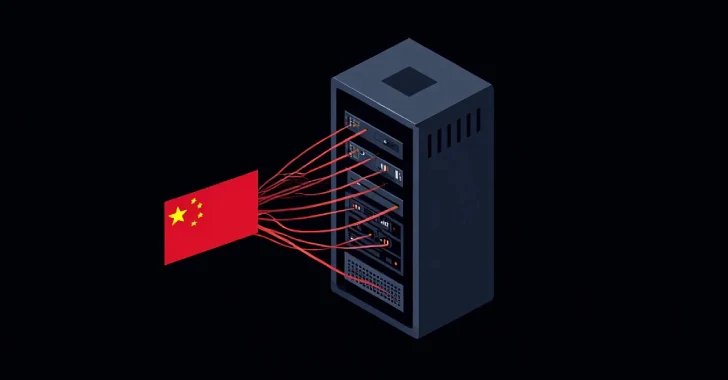Essential Insights
-
Critical Vulnerability Identified: A serious SAP NetWeaver flaw (CVE-2025-31324) with a CVSS score of 10.0 has been exploited by a China-linked actor, Chaya_004, allowing remote code execution via web shells.
-
Widespread Impact: Hundreds of SAP systems across various industries—including energy, manufacturing, and government—have been compromised since the vulnerability was exploited starting in March 2025.
-
Malicious Infrastructure Discovered: Investigations revealed Chaya_004 is using a web-based reverse shell called SuperShell on a designated IP address, alongside various hacking tools indicative of a Chinese-based threat actor.
- Urgent Mitigation Needed: Experts advise immediate patching, restricting access to vulnerable endpoints, disabling unnecessary services, and monitoring for unusual activity to prevent further exploitation.
What’s the Problem?
On May 9, 2025, Ravie Lakshmanan reported significant developments concerning an unnamed threat actor, referred to as Chaya_004, linked to Chinese cyber operations that has been exploiting a critical vulnerability (CVE-2025-31324) in SAP NetWeaver, with a staggering CVSS score of 10.0. This flaw, identified by ReliaQuest and later analyzed by Forescout Vedere Labs, allows attackers to achieve remote code execution through an unprotected endpoint, enabling malicious entities to deploy web shells and the Brute Ratel C4 post-exploitation framework. Since April 29, 2025, Chaya_004 has been implicated in a series of attacks that have affected hundreds of SAP systems across various sectors, from energy to healthcare, all while capitalizing on the security gap highlighted in the months prior.
The evolving landscape of these cyber exploits underscores the urgency of robust cybersecurity measures, as Forescout’s findings reveal that multiple threat actors are now targeting vulnerable systems, not just for data breaches but also for cryptocurrency mining. The analysis further identifies that Chaya_004 is leveraging sophisticated tools and infrastructure, including a malicious reverse shell called SuperShell and various other hacking tools, suggesting a well-coordinated and persistent threat. Experts urge immediate patching of vulnerabilities and increased vigilance against suspicious activities, emphasizing that the potential risks extend beyond opportunistic hackers to more sophisticated adversaries seeking to exploit existing compromises.
Security Implications
The recent exploitation of the SAP NetWeaver vulnerability by the threat actor Chaya_004 has far-reaching implications, potentially jeopardizing other businesses and organizations across various sectors. As hundreds of systems fall victim to remote code execution attacks, a cascading effect looms; compromised entities may inadvertently facilitate further breaches by exposing interconnected networks or sharing vulnerable software architectures. The exploitation of critical infrastructure—from energy to pharmaceuticals—underscores the risk of systemic failure, as malware deployed through web shells could be leveraged to siphon sensitive data, disrupt operations, or instigate financial losses. Furthermore, the influx of opportunistic attackers capitalizing on this flaw amplifies the urgency for robust cybersecurity measures, as even organizations with stringent protocols may find themselves at risk if their partners or suppliers remain vulnerable, thereby amplifying the threat landscape and elevating overall risk exposure across interconnected business ecosystems.
Possible Actions
The recent exploitation of the SAP remote code execution vulnerability CVE-2025-31324 by Chinese hackers signifies an urgent call for prompt and effective remediation strategies. Neglecting timely action can lead to severe operational disruptions and data breaches.
Mitigation Strategies
- Immediate Patching: Apply the latest security updates and patches to SAP systems to close the vulnerability.
- Network Segmentation: Isolate affected systems from broader network environments to limit potential exposure.
- Intrusion Detection Systems: Deploy enhanced monitoring tools to detect anomalous activities indicative of exploitation attempts.
- Access Controls: Implement strict access controls and user permissions to hinder unauthorized exploitation.
- Incident Response Plans: Establish and update incident response protocols for swift action against potential breaches.
- Employee Training: Conduct regular training sessions to raise awareness about phishing and social engineering tactics used by hackers.
NIST CSF Guidance
The NIST Cybersecurity Framework (CSF) emphasizes identifying and monitoring vulnerabilities as critical to maintaining system integrity. For comprehensive guidance, organizations should refer to NIST Special Publication 800-53, which provides a catalog of security and privacy controls aimed at safeguarding information systems against such threats.
Continue Your Cyber Journey
Explore career growth and education via Careers & Learning, or dive into Compliance essentials.
Learn more about global cybersecurity standards through the NIST Cybersecurity Framework.
Disclaimer: The information provided may not always be accurate or up to date. Please do your own research, as the cybersecurity landscape evolves rapidly. Intended for secondary references purposes only.
Cyberattacks-V1

